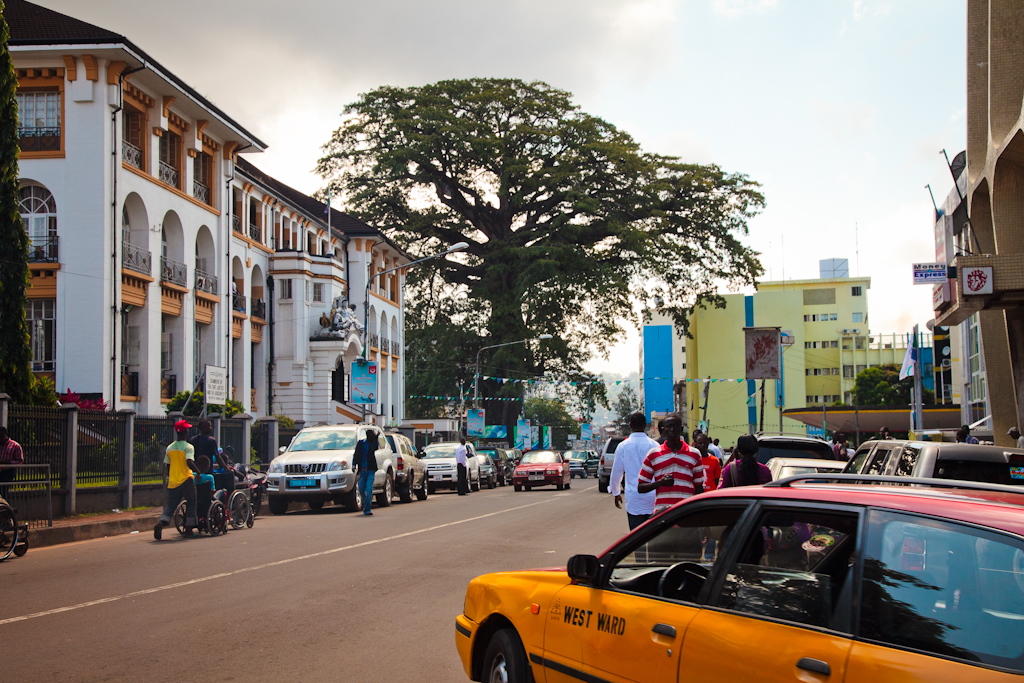Sierra Leone's history is a captivating narrative of resilience, cultural diversity, and the indomitable spirit of its people. From its early indigenous tribes to the arrival of European explorers and later colonization, Sierra Leone's story is marked by triumph over adversity, including the legacy of the transatlantic slave trade and the quest for independence. Today, Sierra Leone stands as a testament to the strength and resilience of its people, embracing its rich heritage while looking towards a brighter future.
Geography of Sierra Leone: A Land of Natural Beauty and Diversity
Nestled on the West African coast, Sierra Leone boasts a diverse landscape that encompasses pristine beaches, lush rainforests, and majestic mountains. The country is dotted with vibrant cities, historic towns, and picturesque villages, offering travelers a glimpse into its rich cultural tapestry and natural wonders. The tropical climate ensures warm temperatures year-round, making it an ideal destination for sun-seekers and adventurers alike.
Tourist Destinations/Attractions of Sierra Leone: Exploring Nature's Bounty and Cultural Treasures
- Freetown: The capital city of Sierra Leone, Freetown, is a bustling metropolis that blends colonial architecture with vibrant markets, lively street scenes, and a rich cultural heritage. Highlights include the National Museum, Cape Sierra Leone, and the bustling markets of Lumley and Big Market.
- Tiwai Island Wildlife Sanctuary: Situated on the Moa River, Tiwai Island is a haven for nature lovers and wildlife enthusiasts. Visitors can embark on guided hikes through the rainforest, go birdwatching, and spot rare primates such as the Diana monkey and the elusive pygmy hippo.
- Tacugama Chimpanzee Sanctuary: Located just outside Freetown, Tacugama is dedicated to the rescue and rehabilitation of orphaned and injured chimpanzees. Visitors can take guided tours of the sanctuary, learn about chimpanzee conservation efforts, and even participate in feeding sessions.
- Bunce Island: This historic island served as a key slave trading post during the transatlantic slave trade. Today, visitors can explore the ruins of the fort, learn about the island's dark history, and pay tribute to the millions of lives affected by the slave trade.
- Outamba-Kilimi National Park: Situated in the north of the country, Outamba-Kilimi is Sierra Leone's first national park and home to diverse wildlife, including elephants, hippos, and a variety of bird species. Visitors can enjoy guided safaris, boat trips along the river, and camping under the stars.
Travel Plan for Sierra Leone Tourists: Embracing Adventure and Cultural Immersion
Day 1-3: Arrival in Freetown
Explore the vibrant capital city, visit historical landmarks, and immerse yourself in the local culture and cuisine.
Day 4-6: Tiwai Island Wildlife Sanctuary
Travel to Tiwai Island for a unique wildlife experience, including guided forest walks, birdwatching, and primate spotting.
Day 7-9: Tacugama Chimpanzee Sanctuary
Head to Tacugama to learn about chimpanzee conservation efforts, participate in sanctuary activities, and enjoy nature walks in the surrounding forest.
Day 10-12: Bunce Island and Historical Sites
Visit Bunce Island to learn about its dark history, explore other historical sites in the area, and unwind on the beaches of Banana Island.
Day 13-15: Outamba-Kilimi National Park
Embark on a safari adventure in Outamba-Kilimi National Park, spot wildlife, and enjoy nature walks and birdwatching excursions.
Best Activities to Do in Sierra Leone: Exploring Nature and Culture
- Beach Relaxation: Sierra Leone boasts pristine beaches along its coastline, offering opportunities for swimming, sunbathing, and water sports such as surfing and snorkeling.
- Cultural Immersion: Immerse yourself in Sierra Leone's vibrant culture by attending traditional dance performances, exploring local markets, and sampling delicious Sierra Leonean cuisine.
- Wildlife Encounters: Explore Sierra Leone's rich biodiversity by visiting wildlife sanctuaries, national parks, and conservation areas, where you can spot rare and endemic species in their natural habitat.
- Historical Tours: Learn about Sierra Leone's history and heritage by visiting historical sites, museums, and landmarks that showcase the country's past, including its role in the transatlantic slave trade.
- Adventure Activities: For adrenaline seekers, Sierra Leone offers a range of adventure activities such as hiking, mountain biking, and river rafting, allowing you to explore its rugged terrain and scenic landscapes.
Sierra Leone Travel Package Costing with Bifurcation
- Budget Package: $800 - $1,200 per person
- Mid-range Package: $1,500 - $2,500 per person
- Luxury Package: $3,000 - $5,000 per person
Top 5 Hotels & Resorts in Sierra Leone
- Radisson Blu Mammy Yoko Hotel: Located in Freetown, this upscale hotel offers modern amenities, stunning ocean views, and easy access to the city's attractions.
- Tiwai Island Ecolodge: Set amidst the lush rainforest of Tiwai Island, this eco-friendly lodge provides rustic accommodation, guided nature walks, and immersive wildlife experiences.
- Tacugama Chimpanzee Sanctuary Guesthouse: Stay onsite at Tacugama Chimpanzee Sanctuary and enjoy comfortable accommodation, delicious meals, and close encounters with rescued chimpanzees.
- Bureh Beach Surf Club: Situated on Bureh Beach, this laid-back surf club offers beachfront accommodation, surf lessons, and a relaxed atmosphere perfect for beach lovers and surf enthusiasts.
- Makeni City Hotel: Located in Makeni, this hotel features spacious rooms, a swimming pool, and conference facilities, making it ideal for both leisure and business travelers.
Customer FAQs related to Sierra Leone
Q: Is Sierra Leone safe for tourists?
A: Yes, Sierra Leone is generally safe for tourists, with friendly locals and a welcoming atmosphere. However, it's advisable to take common-sense precautions and avoid traveling to remote areas after dark.
Q: What is the best time to visit Sierra Leone?
A: The best time to visit Sierra Leone is during the dry season, from November to April, when the weather is warm and sunny. However, wildlife viewing is best during the rainy season, from May to October.
Q: What currency is used in Sierra Leone?
A: The official currency of Sierra Leone is the Leone (SLL). However, US dollars are widely accepted, especially in tourist areas, and it's advisable to carry small denominations for purchases in local markets.









No comments:
Post a Comment